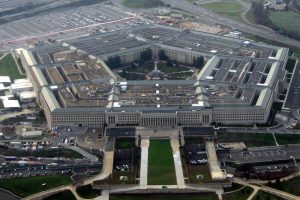
The Department of Defense announced preliminary results of its first ever comprehensive audit earlier this month. It is likely the largest audit of any organization, public or private, ever conducted. The first Defense Department-wide audit covered $2.7 trillion in assets and $2.6 trillion in liabilities for fiscal year 2018, the DOD comptroller said recently.
David L. Norquist, who is also the department’s chief financial officer, spoke about the audit Nov. 14 at a Pentagon media roundtable. The audit covered every asset in the U.S. military, including buildings, fences, storage tanks, planes, ships, tanks, computers, spare parts, invoices, purchase orders, and contracts.
The U.S. government established requirements for each federal agency to prepare financial statements back in the 1990s. But for more than 20 years, the Department of Defense has lagged other agencies that were following modern accounting standards, conducting an audit, and reporting what they received and spent.
“It demonstrates our commitment to fiscal responsibility and maximizing the value of every taxpayer dollar that is entrusted to us,” said Pentagon spokesperson, Dana W. White, when the audit was first announced.
To carry out the audit, the Pentagon deployed 2,400 auditors to go over records and examine bases, property, and weapons of a federal department that has a budget of $681 billion this year. The audit was conducted by the Defense Department’s Office of the Inspector General with the help of outside public accounting firms.
Audit Results
The results of the audit were mixed. Five organizations received an unmodified opinion, in other words a clean opinion, meaning no discrepancies, the highest possible rating. They are: the U.S. Army Corps of Engineers – Civil Works, the Military Retirement Fund, the Defense Health Agency – Contract Resource Management, the Defense Contract Audit Agency and the Defense Finance and Accounting Services – Working Capital Fund.
Two organizations, the Medicare-Eligible Retiree Health Care Fund and the Defense Commissary Agency, received a modified opinion, which means auditors have suggested some areas for remediation.
Audits for the DOD Office of Inspector General and Defense Information Systems Agency are still in progress and should be completed by the end of next month, Norquist said.
Other DOD agencies, which is most of the DOD, he said, received disclaimers, which means there were issues such as inventory discrepancies, information technology systems security issues and financial reporting errors.
The agencies with discrepancies had by and large never been audited before, Norquist said, and most of them have already started remediation efforts to correct them so that when they are audited again at the end of this fiscal year, they will have shown improvement.
By far, the most discrepancies involved IT security, he said. For example, not revoking certificates of personnel who have departed or using systems that could be hacked.
Auditors did not find any evidence of fraud, nor did they report any problems for civilian or military pay. And, all of the services were able to account for the existence and completeness of all major military equipment.
Norquist speculated that future audits will generate a healthy competition among the services to be first with a clean audit, meaning no discrepancies for every single organization.
How the Audit was Conducted
The DOD Office of the Inspector General and independent public accounting firms performed the department’s financial statement audits.
It was important that multiple auditing agencies were used to generate healthy competition, Norquist said.
About 1,200 auditors conducted more than 900 site visits at more than 600 locations, including military bases, depots and warehouses.
The auditors reviewed hundreds of thousands of items. Auditors confirmed counts and condition of assets, reviewed DOD systems, and validated accuracy of personnel, he said.
However, the auditors didn’t count every single bean, bullet and bandage, Norquist added. Instead, he said, they took statistically significant samples.
Why Auditing is Important
The audit is not just important to improving IT security and knowing where every piece of equipment is and what condition it is in, he said.
The audit also improves readiness. Norquist provided an example. At Hill Air Force Base, Utah, $53 million worth of uninstalled missile motors were listed in “not working condition,” he said. However, the auditors found that they in fact were operational. Subsequently, the Air Force was able to put them into service.
In the past, the services were reluctant to conduct a department-wide audit, Norquist said.
However, Defense Secretary James N. Mattis was adamant about having one, saying that ignorance is not a strategy.
Mattis directed the DOD to embrace the audit, review the problems and fix them, Norquist said. It will also be conducting the audit each year going forward ![]()
This article is partly based on an article first published on the Department of Defense website, www.defense.gov

